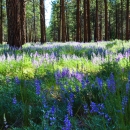Numerous attempts have been made to quantify ecological factors that affect the calling range of animal signals. The various processes leading signals to become distorted and embedded in background noise have been described in many habitats (ranging from forest to savannah) and the propagation path in these biomes has thereby been characterized. However, the impact of climatic factors on acoustic communication has been little studied. Surprisingly, to our knowledge, the importance of rain, a regular phenomenon occurring in all habitats except deserts, has never been investigated. Here, we describe a 69-fold advantage in area reached by the call of a territorial bird, the tawny owl (Strix aluco) in dry versus rainy conditions. In support of this, we found a marked reduction in the calling of tawny owls in rainy conditions. Constraints imposed by a rainy propagation path are likely to modify the reliability of acoustic information and thus calling behaviour of many animals.
Publication date
Type of document
Protocol
Facility
Program
Species
FWS Focus



